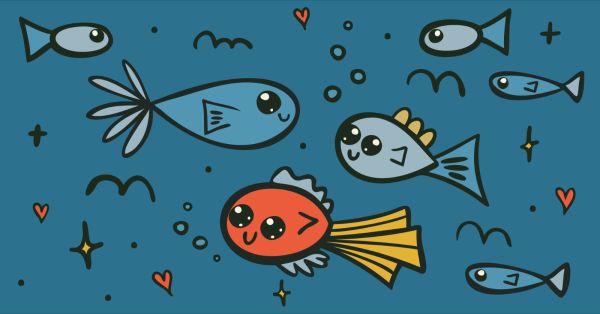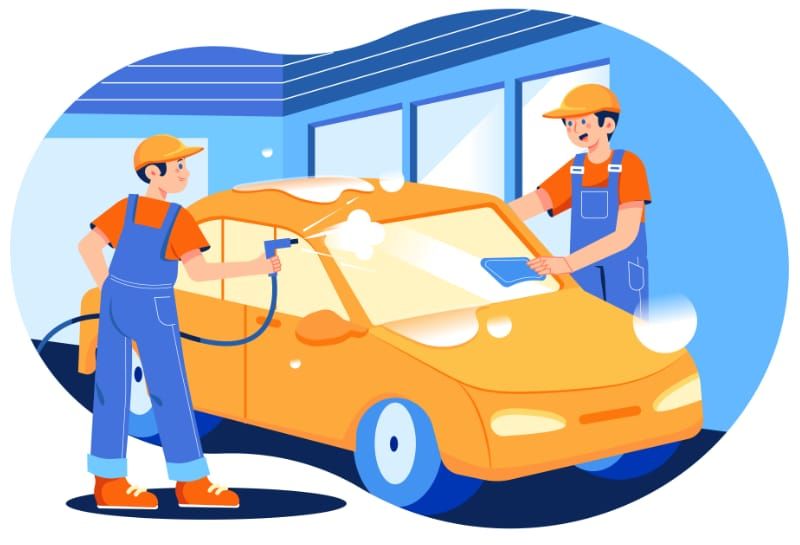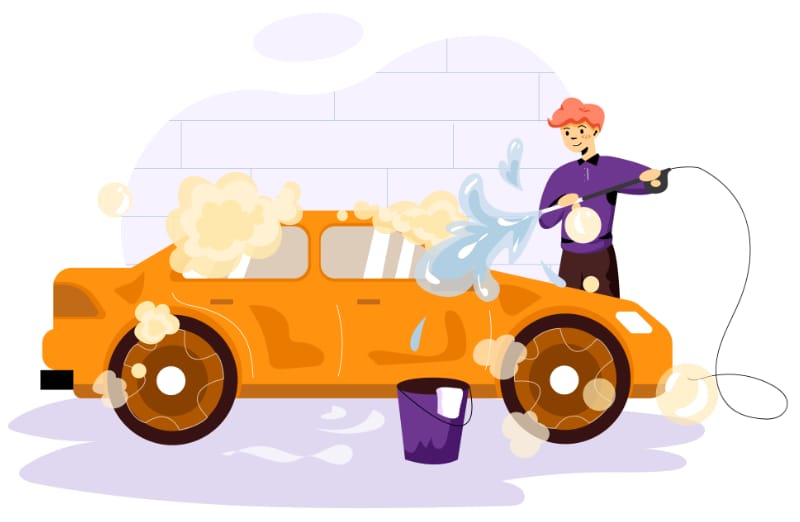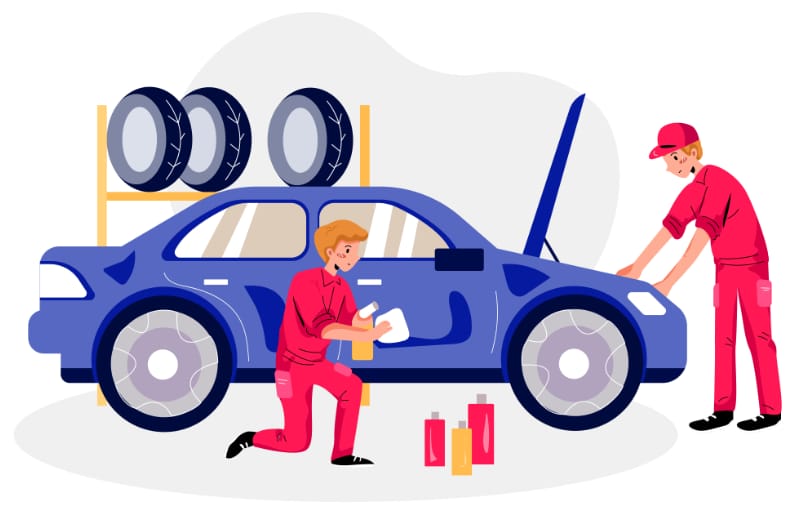
Introducing new pricing for Helpmonks
Discover Helpmonks' new pricing structure, featuring a flexible PRO plan, a FREE plan for smaller teams, and an exciting affiliate program. Experience unparalleled email management solutions today!
Read nowThe word "client" comes from the Latin word cliens. This word is a variant of the word cluens. It means "hear or obey".
"Customer" comes from the word "custom", which means "an accepted way of doing something". The word "custom" is also Latin in origin.
So, yeah, the definitions of the two words' origin words are different. But the present definitions of client vs. customer don't seem as different. Just look at what the Merriam-Webster Dictionary has cooked up for the two:
Yet, business professionals don't use them interchangeably. So there have to be some differences. But just what the heck are they?
Read on to have this veil of confusion lifted.
A lot of business professionals can see a ton of differences between clients and customers. They seek out different services. They have different needs and wants.
Clients and customers also have different relationships with businesses. They have different business relationships and not, you know, other kinds of relationships.
You can learn more about the specifics in the sections below.
What do you think about when you read the term "client"? You're probably picturing people in suits, right? Most people probably think the word "client" fits close to "formal" and "fancy".
There's a good reason for this. Client-based businesses usually treat clients with respect. This keeps the relationship they have with their clients strong.
Businesses have a good reason why they have to keep their relationships with their clients strong. It has nothing to do with clients having more money. They also don't have to attract a large number of clients.
Instead, their main goal is to keep the same clients coming back.
Do you want to identify a client-based business quickly? If so, look right at its sales strategy. You'll likely find the testimonials of previous clients front and center.
Clients tend to value business relationships over service value. Therefore, businesses often emphasize their past relationships with clients in their advertisements.
Time is one of the biggest factors differentiating clients from customers. Client relationships can last lifetimes or more in some cases. Usually, though, clients can spend anywhere from a few months to several years with a business.
But not all projects last lifetimes, of course. So, no matter how friendly the business professionals are, they probably won't work with clients 24/7/365.
Clients can disappear from a business for sizable periods. They can then appear at random times with new projects. Others have more frequent requests.
Letting clients roam free may seem like an unstable business strategy. But most client-based businesses can still get by with a small number of clients.
Businesses can form client relationships as deep as the Mariana Trench. These relationships sometimes form because of good old trust. The clients receive good quality services and believe they'll keep getting the same.
At other times, businesses will work like ants to grow these relationships. During assignment-less periods, businesses will ensure that clients don't forget them. They may send them updates, surveys, and other forms of communication.
When strong relationships form, clients can stay loyal for a lifetime. They'll keep returning again and again to the same business. Though the business has competitors, the client likely won't visit them.
These strong client relationships aren't all that bright and sunny. Clients will often expect more from businesses they frequent. Because as client relationships grow, so does trust.
The trust may overflow and become a devastating flood. Clients won't be as forgiving when they make mistakes. Clients may also create orders that require businesses to go above and beyond.
Also, clients can tell other clients about what happened. Then those clients may end up leaving the business and ruining it. Therefore, businesses must be careful when they fulfill client requests.
Client-centered businesses may get some rather wild requests at times. They may, for instance, get asked to import this one product from the Middle of Nowhere, Asia, for a project. If the client has the funds, businesses are usually happy to fulfill the request.
Businesses partly make their services this customizable to keep their clients happy. But it's also easy for clients services to change their services. Customers are usually often stuck with a set product.
For example, advertising services often create original designs for their clients. They should also make these designs according to the client's specific directions. It won't take much effort to change an aspect of the design if necessary.
But businesses will only allow so much customization. A graphic art studio probably wouldn't redecorate its entire studio to please a single client.
Most customers only need to pay a set price, and they're done. This isn't the case for clients. The number of different ways clients pay businesses can rival the number of drops in the ocean.
In many cases, clients will pay subscription fees to use services. Gym members are a good example of this type of client.
Other clients may pay fees to keep services available. Some lawyers and freelancers will charge retainer fees. When clients pay these fees, the receivers prioritize their projects over others.
Clients also often have to pay upfront fees. These are portions of the final fees that clients pay before projects start. The client will pay the remaining final fee when the service completes the project.
Usually, a lot is riding on client services rather than customer services. One bad project can send a business into a tailspin. This is probably the reason why a lot of clients and businesses sign formal contracts.
These contracts define the clients' and businesses' responsibilities. Each of them has a role to play in preserving the relationship and aiding productivity.
The content of these contracts varies. They change based on specific relationships and industries. But most of them usually contain terms of service, billing information, and a privacy acknowledgment.

Businesses still have to treat customers with respect. But they don't have to treat them like royalty if they don't want to. This is because businesses don't need to form relationships as strong as steel with customers.
Customers can keep coming back to the same store. It's not as likely that they will, however. They don't put businesses on pedestals that stand above the clouds as clients might.
They don’t benefit businesses like clients when they return to the same store. This likely has to do with the price differences. So businesses that cater to customers must attract as many customers as possible.
Our products are fresh from the farm! We offer the best deals in the land! Get two haircuts for the price of one!
These phrases will attract customers but not clients. Customers don't care as much about having a canyon-deep relationship with businesses. They want the best products and/or services.
In this case, "best" usually translates to "highest value and quality". So businesses usually focus their sales campaigns on these attractive qualities. They brag in massive bold letters how cheap yet good their products are.
Some places may also offer customers free or cheaper products as part of a deal. This strategy can at least attract customers for the duration of the sale. It may or may not get the customers to stay.
Customers go in, buy a product, and get out. That's the entire sales cycle. You can't expect customers to spend much time with a business.
So customer-focused businesses need to draw in the crowds. They can't keep going on with a few people at their side. They won't spend the time getting what they need.
Customer-based businesses and customers are not like Watson and Sherlock. They're more like farmers and their animals. Farmers only keep their cows, chickens, etc., as long as they supply them with food.
Customers won't react if businesses try to get all buddy-buddy. They choose businesses based on other factors. They may choose the business closest to their home, for example.
Still, customer-based businesses will try to form customer relationships. They may put wording in their marketing that touts them as a "friendly community business". Otherwise, they'll keep customers returning in a way that increases the value of their product or service.
Some businesses offer loyalty programs or punch cards. These reward customers for frequently visiting the same store. A café may give customers a free drink after they've filled out a punch card, for instance.
Customers have some expectations, but they shouldn't be as high as those of clients. They shouldn't expect store or restaurant workers to be gods and goddesses. There are exceptions, of course, but they're not as common as social media makes them seem.
A customer won't appreciate it if a product they bought is faulty. This experience probably won't end a business, though. The customer may even continue going to the same store despite this experience.
Businesses can easily turn this customer service experience around with good customer support. Customers can call and ask for a refund. If their request is reasonable, the business should refund the customer.
This will usually be enough to satisfy a customer.
Workers can't snap their fingers and change a product's size, color, etc., after it's already boxed and sitting on the shelf. Things may be different with a meal offered at a restaurant. Guests can ask for extra sauce, no bun, more fries, etc.
Even restaurants are somewhat limited in their customization offerings. They can only use the materials they have close at hand. The time constraints of the sales cycle make it impossible to order items.
A guest at a restaurant, for example, may want croutons on a salad. The restaurant staff can accommodate this request if they have croutons available. If they don't, they will have to decline this request no matter how upset the customer gets.
The ways that customers pay are only limited to cash or card. What they pay is the set price of the product or service. Customers don't pay retainer fees, subscription fees, etc., to a business.
They usually only need to pay once per sales cycle. A "sales cycle" in this case, is the purchase of one or more products or services.
Clients may also pay individually for each service they get from a business. But this doesn't happen as often.
Customers don't usually have to sign contracts either. Their transactions aren't as important to businesses. A bad customer transaction is about as likely to hurt a business as an arrow can hurt a stone wall.
The only exceptions may be waivers that they have to sign up for certain events. But these are nothing like the contracts made between clients and businesses.

Do you still not quite get it? That's perfectly okay if that's the case. Many people often have trouble distinguishing words (people's issue with "there, their, and they're" is a great example).
English is an impossible beast to tame, am I right? Still, you don't need to lose hope. This article isn't over yet.
Try reading the list of common businesses below. You'll get explanations on if the businesses are client-based or customer-based and why.
Law firms are business lawyers formed to practice law. One purpose they have is to represent clients in legal cases. They also advise clients on their legal rights and responsibilities.
Lawyers don't always get repeat customers, but they often do. Certain businesses may have specific lawyers they call to handle matters. They'll pay their lawyers retainer fees to keep them focused on their needs.
In addition, lawyers have long-term sales cycles. It could take years for a case to make it to court. Lawyers will stay in contact with clients during that time.
Furthermore, lawyers often tailor their services to each case. Some legal cases may require witnesses. Others may need lawyers to write letters to insurance providers.
Retention fees aren't the only way clients can pay lawyers. They can also pay percentages of the money lawyers will win for their clients. No customer service has a payment system like that.
Advertisement companies handle marketing strategy matters for different companies. These can include media, advertising, public relations, and other services. These help businesses strengthen their brands and sell their services and products.
Businesses don't usually stop with one marketing campaign. They should need several over many years. They often return to the same advertising company to get different marketing campaigns.
Creating marketing campaigns can take anywhere from a few days to months. That's not a lot of time. However, it takes more time than the usual customer transaction.
Advertisers usually create projects for their clients from scratch. This allows them to customize their projects in nearly endless ways.
Payments with advertising companies often involve upfront fees. Advertisement companies may also tie their payment systems into contracts. You can also find a few advertising companies that work based on subscriptions.
Supermarkets are types of stores. They often sell food, drinks, and household products. Customers go through the store sections to get the products that they want or need.
Customers will get and pay for the items they need. Then they will leave. This completes the entire sales cycle.
Manufacturers have already completed all the items on grocery store shelves. Customers cannot ask the workers to change any items they buy.
Customers only pay the price for the items. Prices may change based on sales, inflation, etc., but they stay as single prices. Grocery stores never charge upfront fees, subscription fees, or other fees.
Restaurants are businesses where customers can order and be served food and drinks. Customers usually consume these on the restaurant premises. However, customers can often also take food home.
Guests will enter a restaurant, order and receive food, eat the food, and then leave. This completes the sales cycle.
Restaurants can change the meals served to customers. However, they cannot order food items that they don't have. They're limited to what's in the restaurant.
Yes, customers will often tip their waiters or waitresses. But this still counts as a set payment for a service.

Even if you understand the difference now, the whole thing may still seem like a to-may-to/to-mah-to situation. Does it matter which term you use? Well, it might.
It's best to stay on the tightrope and use the right terms. Your clients and customers may not know the distinction. However, many will know the difference between the two terms and may get confused.
A business can have both clients and customers. This often happens with larger businesses that have multiple services. So you may have to be careful with how you talk to individual buyers.
Do you not trust yourself to use the terms "client" and "customer" correctly? That's perfectly alright! It's also better not to fall off a cliff into a valley of shame.
Consider using the following terms to talk about your buyers instead. These likely won't confuse and/or offend your buyers. Remember, though, that you must be careful about the context in which you use some of these terms.
A subscriber is someone who pays for a subscription. Sometimes this can refer to a customer or a client. It depends on the type of service that you're providing.
Services like online streaming usually have customers. These services don't create items for individual customers. That would be incredibly impractical and expensive.
People can also, however, subscribe to artisanal services. These services fall more into the client area. The sales cycle time is long, and the products are more customized.
As you can see, the distinction is about as clear as mud here. Use the term "subscriber" just to be safe.
As you can see from its usage in this article, the term "buyer" can be a synonym for client and customer. It properly refers to a person who buys a service or product.
Keep in mind, though, that some professionals only use the term buyer in certain ways. They often use them to refer to people who make B2B purchases. So they may wonder what you're talking about when you misuse the term.
Most clients or customers should understand what you mean.
The term "user" refers to someone who interacts with a product. It can technically refer to a person who interacts with any product, but it usually refers to a person who uses a type of software. So most clients and customers may think of the technological connotation.
Thus, customers may wonder why you're calling them that when they eat a sandwich. Clients may feel the same way when purchasing a piece of art. You're technically using the word correctly, but most people don't use it that way.
Still, "user" can work in the same context as "subscriber". People often pay subscription fees to use pieces of technology. Sometimes clients will also pay subscription fees to use types of software and have them tailored to their needs.
The term "follower" doesn't always refer to a buyer. It's usually used for a person who subscribes to a social media account or some other kind of content. However, that subscriber can purchase that content from you as well.
Newspapers, for instance, can technically have followers. Customers often pay subscription fees to follow a newspaper's content. Newspapers probably won't make content for individuals, though.
Some entertainment accounts may also have followers that pay them to create individualized content. So, it's a term that you can use with other terms.

What matters most is knowing how to treat your clients or customers.
As mentioned, each type has different needs, expectations, etc. You have to tailor your business to your business's buyer type. This means building out your marketing strategy, business plan, and all that fun stuff so that it can appeal to your type of buyer
Before you do that, though, you have to identify the exact type of buyer that you have. Below, you'll find some tips on identifying your particular type of buyer.
You can know both clients and customers on a first-name basis. You can also consider them family members and/or super-duper best friends. What matters most, though, is whether or not your business can survive with just a few of them.
Also, think about how much your buyers put into your business. Customers and clients can both buy a lot. Customers may come in and get hundreds of dollars worth of products every week.
However, clients should spend much more money on businesses. They also give money to businesses more often. In addition, they tend to have more money than customers do.
Do you trust your buyers to keep coming back? You can probably tell if your customers are coming for the products and not you. Finding this out may break your heart, but it is important to know.
You can't quite trust clients, but you can probably trust them a bit more. Consider how easily your buyers can get what they need at other businesses. Clients probably can't get exactly what they need at another business.
Clients prefer to stay with a business with built-in knowledge of their needs. They shouldn't want to start over. So it's unlikely that they will go to other businesses.
If you learn that you have clients, make sure to keep your client relationships strong Pay close attention to all of their usual wants and/or needs. You should also treat them with extreme friendliness.
Customers will appreciate this individualized attention as well. However, this may not make them continue purchasing items from your business. Your business may be better off if you use your efforts elsewhere.
You may already have built marketing campaigns for clients or customers. Perhaps you took over a business and are simply doing what the previous owner did. Maybe you are mimicking the advertising methods of competitors.
Whatever the case, if your advertising methods work, you’re probably successfully advertising to clients or customers.
What kind of images do you see in your ads? You'll likely see images of your products or the faces of previous clients. Which one you have can tell you immediately if you have clients or customers.
If you see your products, you appeal to customers. Remember that they care more about your products than your relationships. You need to show the freshest-looking food, the most organized database, etc.
You’re appealing to clients if you see more faces. They care more about relationships. You've probably grabbed the most attractive-looking clients you have to put next to client testimonials to add some realism.
Read the text that your ads contain. The text should either brag about the products you have or the clients you've served.
Do you see clients talking about how you have services better than ice cream on a hot summer day? Or maybe they're talking about how your representative is as sweet as candy. Phrases like these indicate that you have clients.
Customer-based ads can have testimonials. However, these testimonials should center around the products rather than the people. You're also likely to see positive descriptions of your products in customer-based ads.
Maybe you haven't set up your marketing strategy yet. If so, use other strategies in this section to identify if you have clients or customers.
If you have customers, focus your marketing strategy on your products. If you have clients, focus your marketing on your relationships with your clients. You can use both strategies, but prioritize using one or the other.
Remember that clients and customers behave differently during the sales cycle. When buyers purchase your products or services, watch them like a hawk (but not so much that it's creepy). Use their behaviors to figure out which type of buyer you're working with.
Turn your eyes to the examples of different client-based and customer-based businesses. What kinds of products are they selling? You can probably match it with one of your business’s products.
For example, supermarkets sell set products. On the other hand, advertising companies sell designs, advertisements, etc., for businesses. The former is a customer-based business, and the latter is a client-based business.
Do you want to have clients and not customers or vice versa? This is easy to do.
change your buyer approaches, relationships, marketing strategies, etc., to match what the other type of buyer would like. This should attract either clients or customers to your service.
Now you should know the difference between client vs. customer. Use it to help boost sales at your business.
Also, no matter if your business has clients or customers, one of our team collaboration tools, can help. HelpMonks offers a shared inbox, a live chat tool, and more. Get a free trial by signing up on this page.

Discover Helpmonks' new pricing structure, featuring a flexible PRO plan, a FREE plan for smaller teams, and an exciting affiliate program. Experience unparalleled email management solutions today!
Read now
Dynamic email signatures increase brand visibility, build brand identity, and boost conversions. Learn how to create and update dynamic email signatures.
Read now
Looking for an email marketing automation software? This guide shows what to look for. We'll also review the best tools for your online marketing needs.
Read now
Using customer engagement solutions helps you keep your existing customer base and grow. Here are the top 10 customer engagement solutions for your business.
Read now
Empower your team and delight your customers.
